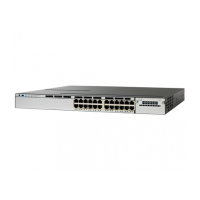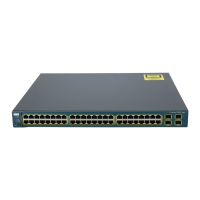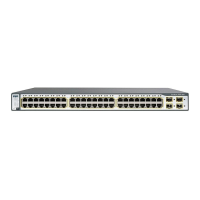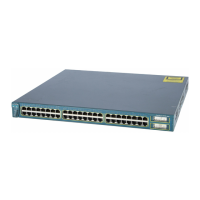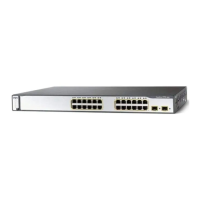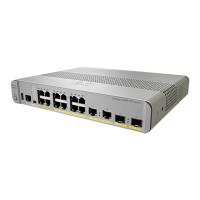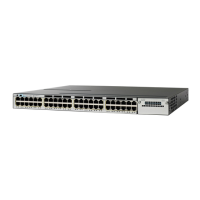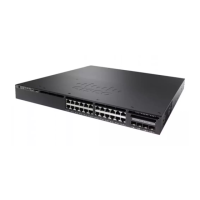© 2013 Cisco and/or its affiliates. All rights reserved. This document is Cisco Public Information. Page 42 of 54
The switch and wireless management IP address of the mobility controller switch is 20.1.3.2.
The switch and wireless management interface is VLAN 603.
The client VLAN that connects the mobility controller switch to the mobility agent switch is VLAN 500.
Note: The SPG definitions and the SPG membership are configured only on the mobility controller switch, and
only the mobility controller definition is configured on the mobility agent switches. A complete configuration is in
Appendix B.
The SPG membership defined on the mobility controller does not change depending on whether the access
network between the mobility controller and mobility agent switches is Layer 2 or Layer 3.
Note: Advanced converged access configurations are described in the Cisco Catalyst 3850 Switch Services
Guide.
Cisco Catalyst 3850 Switch Database Manager Template
Cisco Catalyst 3850 switch database manager (SDM) templates allow configuring the hardware resources based
on the license level and features enabled in the switch. Two SDM templates are provided in the Cisco Catalyst
3850 Switch:
Advanced: This is the default template for all license levels. The advanced SDM template maximizes system
resources for advanced features such as NetFlow, security access control, flow SPAN, multicast groups, and more.
VLAN: This template is available only in the LAN base license level and is enabled when the Cisco Catalyst 3850
Switch is deployed as a Layer 2 switch. Wireless features will not work with this SDM template configuration.
SDM Template Resources: VLAN and Advanced
Table 1 details the resource allocation for VLAN and advanced SDM templates. These resource allocations are
based on L2 and IPv4 features. Because IPv6 features consume twice the ternary content addressable memory
(TCAM) table size of IPv4 table entries, the switch supports half the number of TCAM table entries for IPv6.
Table 1. SDM Template Resource Allocation
Maximum number of unicast MAC addresses
Overflow unicast MAC addresses
Used when the maximum unicast MAC address limit is reached
IGMP and multicast groups
Maximum number of IGMP and multicast groups
Overflow IGMP and multicast groups
Used when the maximum IGMP and multicast group limit is reached
Maximum supported directly connected host routes
Maximum supported indirect routes
Security access control entries
QoS access control entries
Policy-based routing ACEs
Internal software parameter
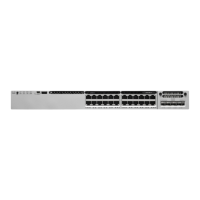
